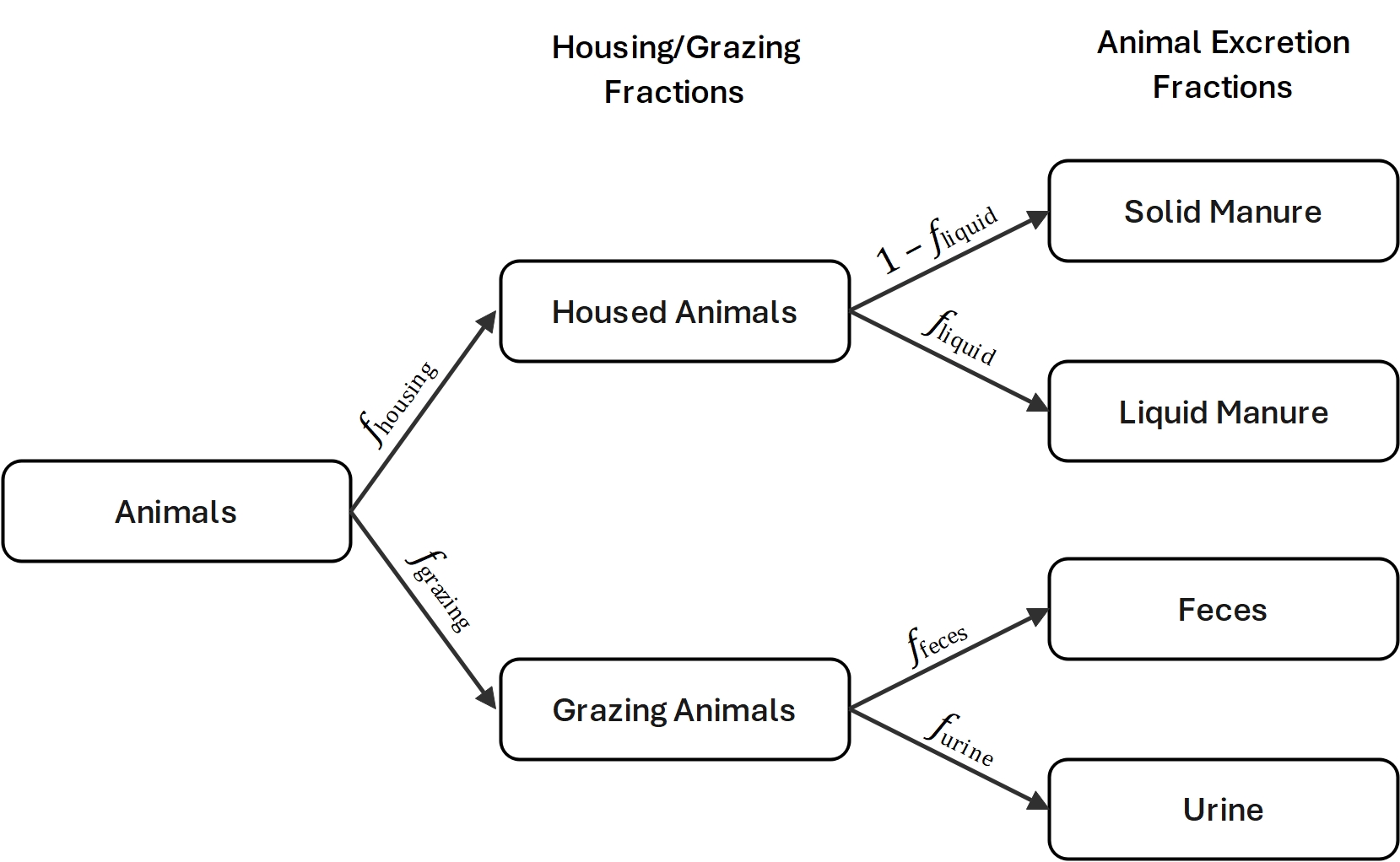3. Livestock & Manure Management
3.2. Manure management systems
In Miterra, four types of manure management systems (MMS) are defined:
-
Housing
-
Farmyard
-
Storage: the storage of manure in unconfined piles/stacks, or in tanks/ponds/lagoons, typically for a period of several months to less than a year, before the manure may be applied to the field as fertilisers;
-
Grazing: the dung and urine deposited directly to the soil by grazing animals during grazing period.
The fractions of N excretions in each MMS (fhousing/yard/grazing) are derived from IPCC NIRs ( Greenhouse Gas Inventory Data - Flexible queries Annex I Parties).
For each MMS, livestock excretions are handled in both solid and liquid forms. The respective fractions of solid and liquid manure are determined by a predefined liquid-solid manure collection parameter (fliquid), which is specific to region and animal type.

3.3. N content in livestock excretion
N content in livestock excretion is calculated for each type of animal and each type of excretion (solid or liquid):
where:
|
is the average amount of N in excretion that a single animal produces in one year (kg N head–1 year–1). |
|
|
is the fraction of N excreted during housing, farmyard, or grazing period. |
|
|
is the fraction of solid or liquid manure collected for the livestock in a region. |